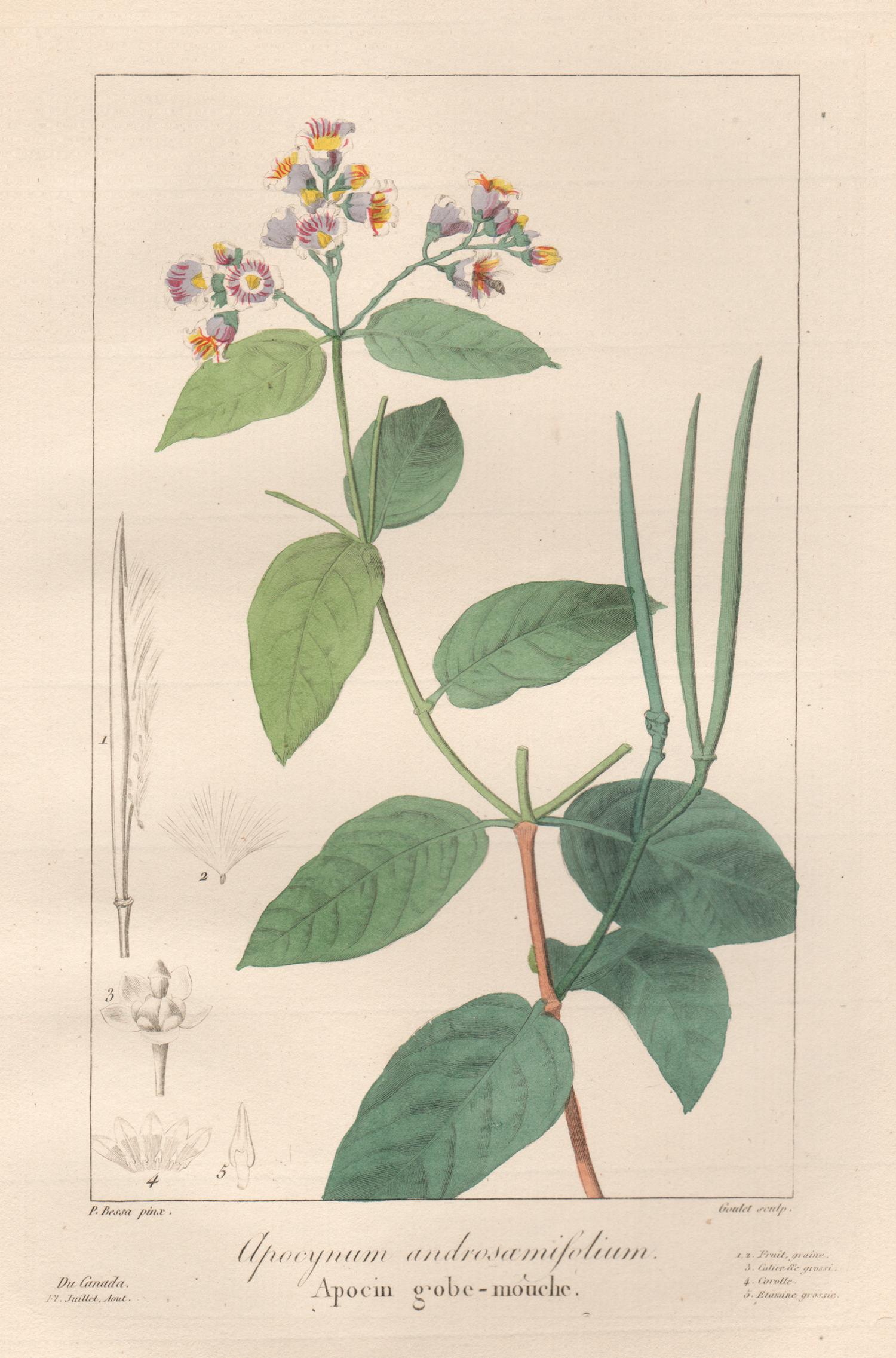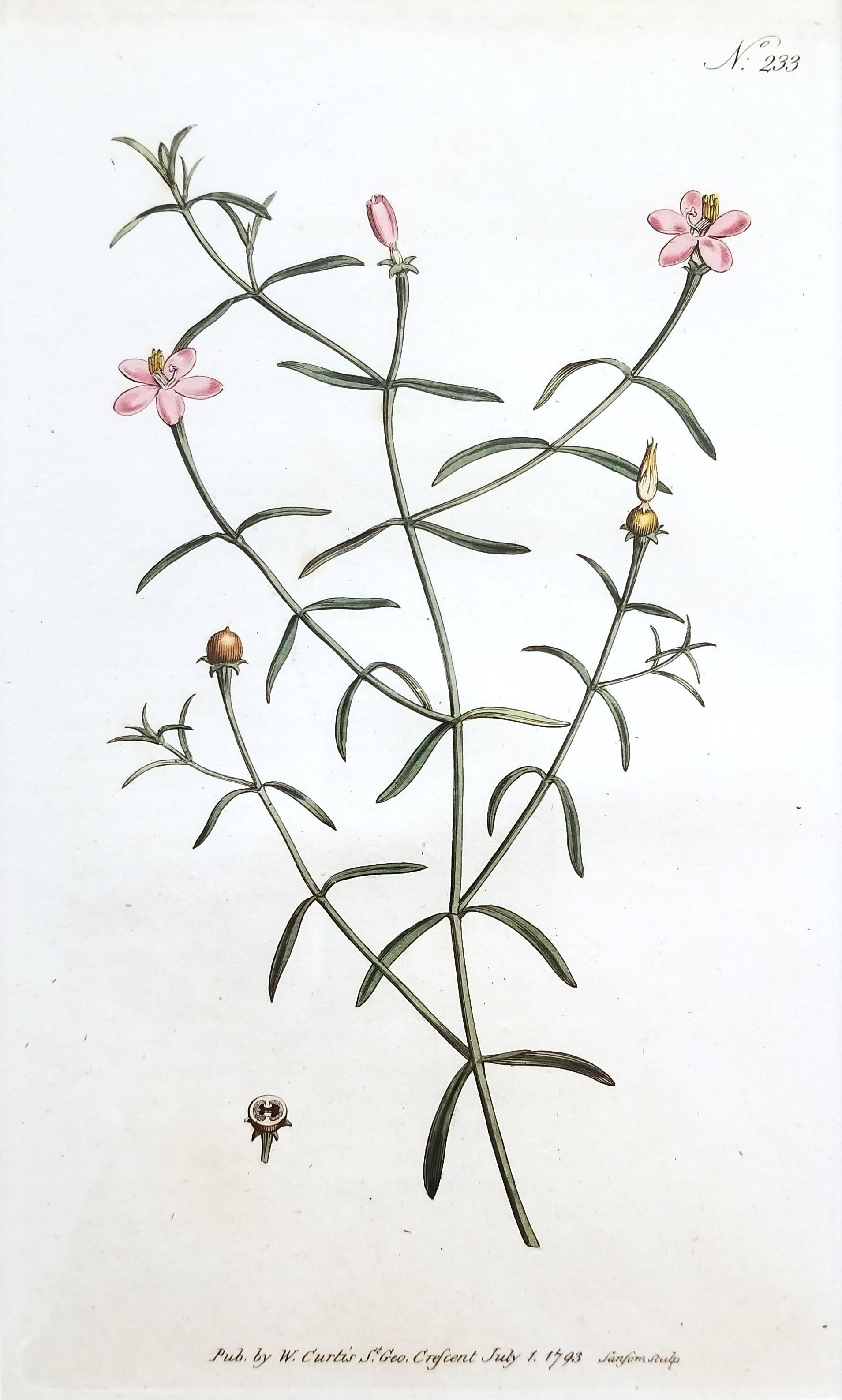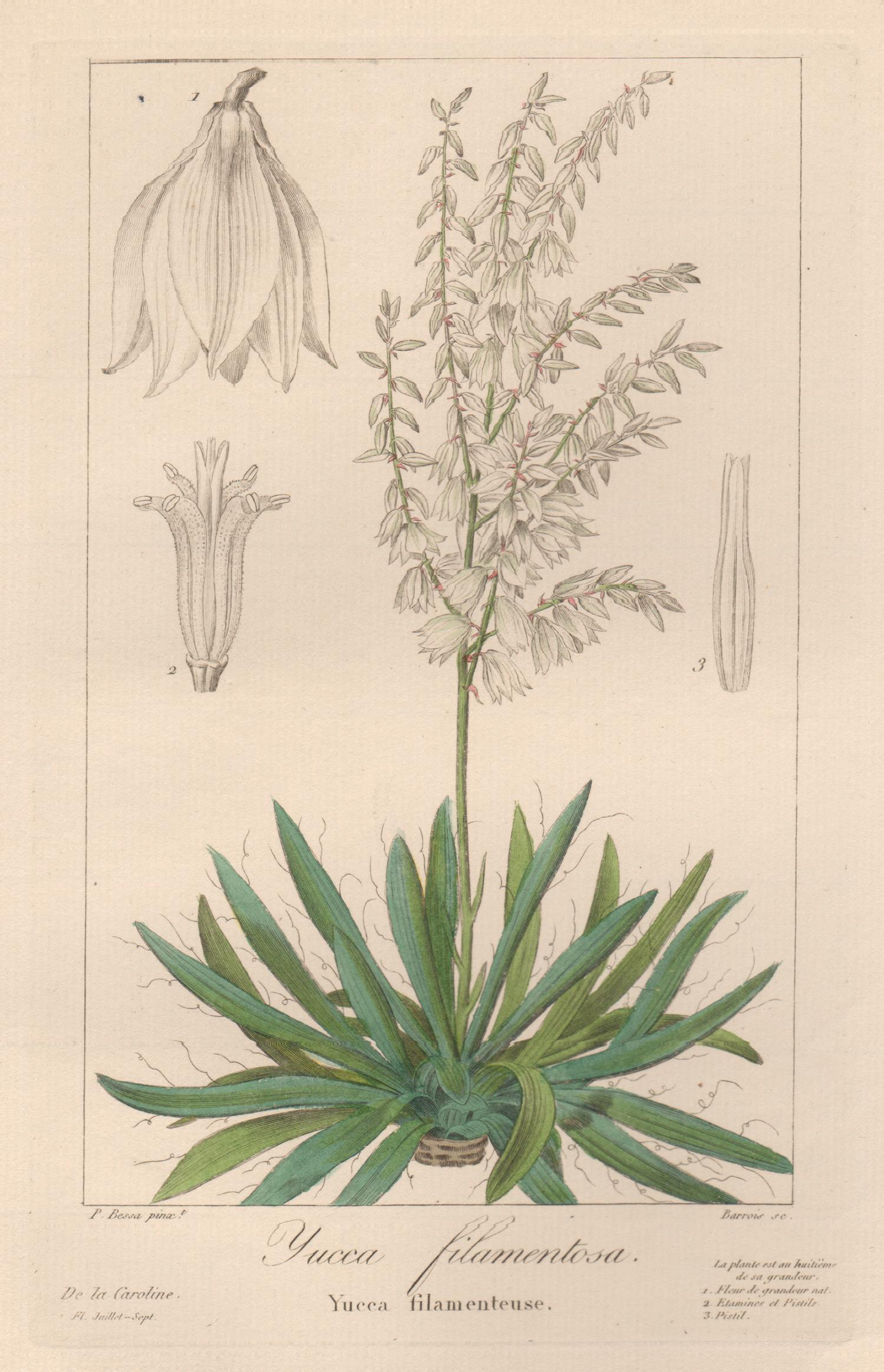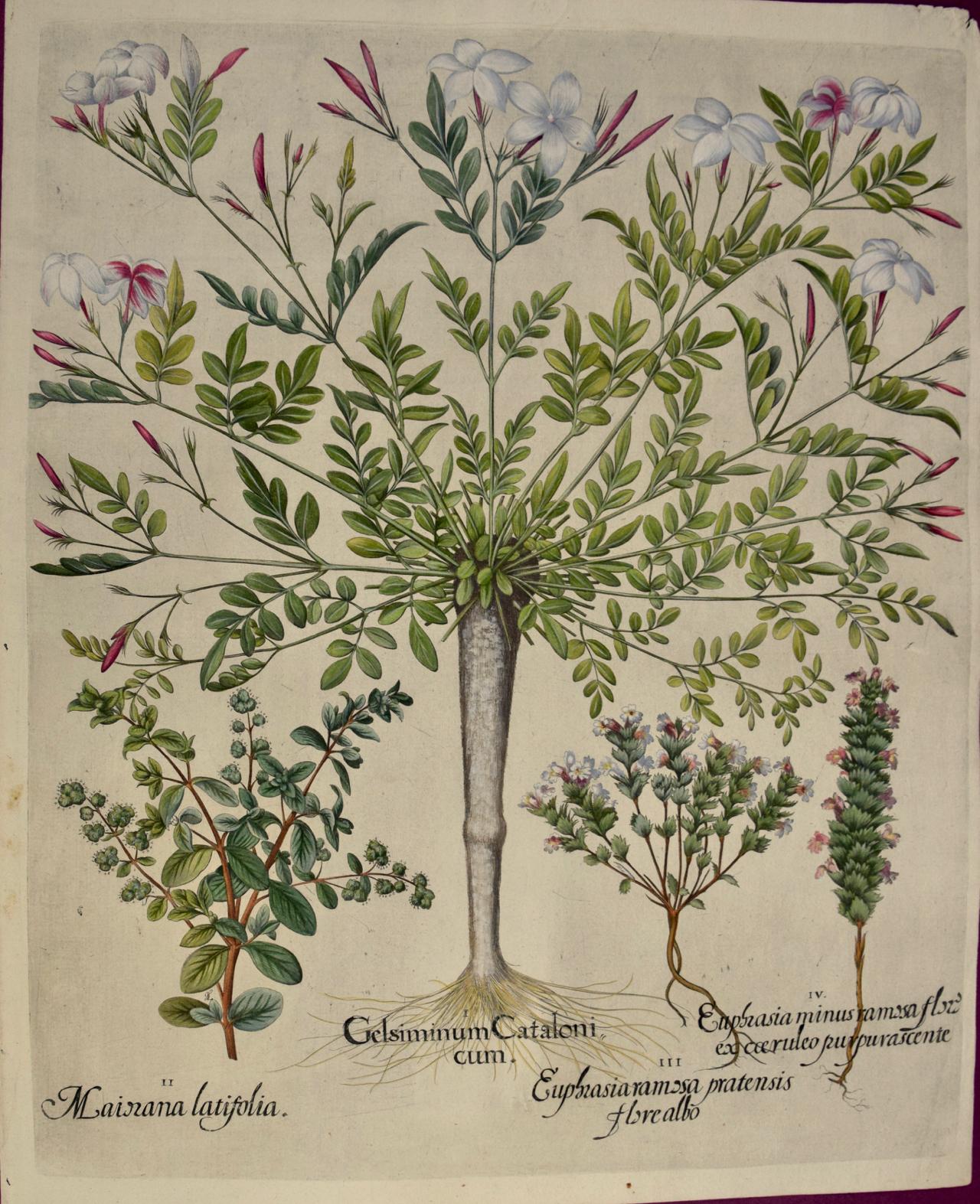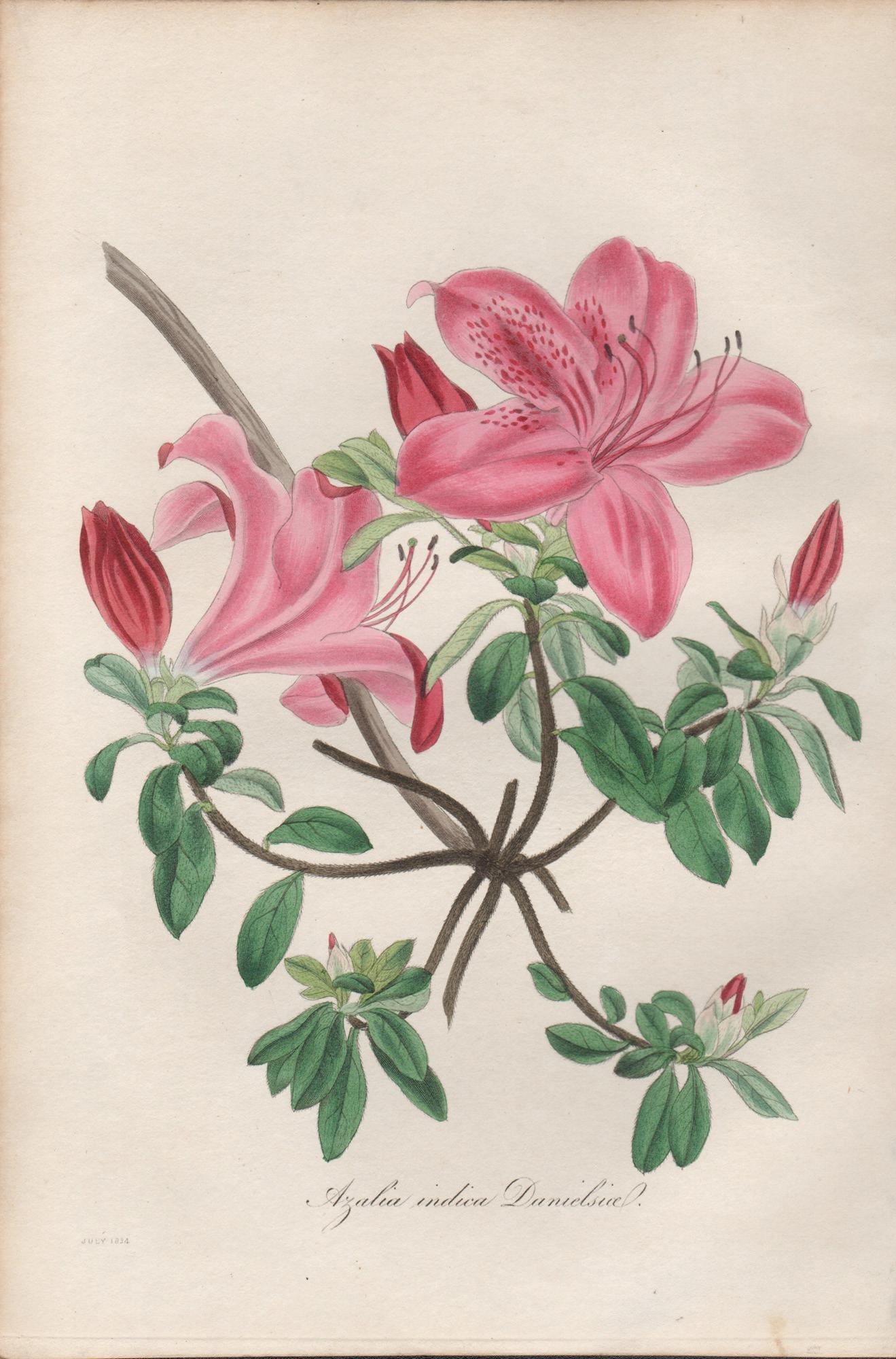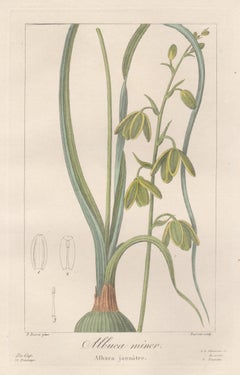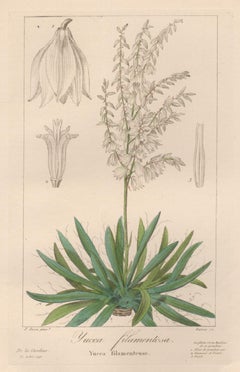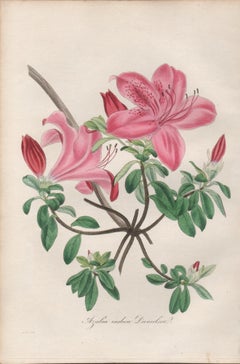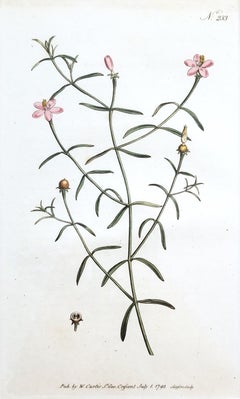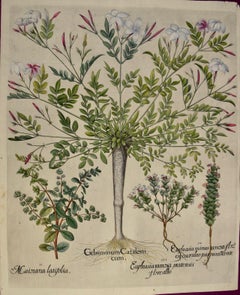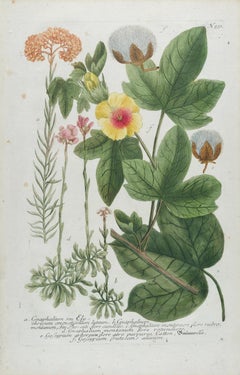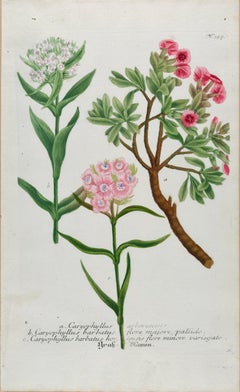Items Similar to Adenandra umbellata - French botanical flower engraving by Bessa, c1830
Want more images or videos?
Request additional images or videos from the seller
1 of 3
After Pancrace BessaAdenandra umbellata - French botanical flower engraving by Bessa, c18301830
1830
$120
£91.66
€105.33
CA$171.30
A$187.82
CHF 98.08
MX$2,260.15
NOK 1,236.10
SEK 1,162.26
DKK 786.61
About the Item
'Adenandra umbellata'
Original copper-line engraving with original hand-colouring.
From 'Herbier general de l'amateur' by Jean Louis Auguste Loiseleur-Deslongchamps & Jean Claude Michel Mordant de Launay. Published in Paris, circa 1830.
Pancrace Bessa was a talented pupil of Redoute & Van Spaendonck and is considered one of the greatest 19th century flower artists.
290mm by 215mm (sheet)
205mm by 130mm (platemark)
- Creator:After Pancrace Bessa (1772 - 1835)
- Creation Year:1830
- Dimensions:Height: 11.42 in (29 cm)Width: 8.47 in (21.5 cm)
- Medium:
- Movement & Style:
- Period:
- Condition:A few tiny marks in outer margins.
- Gallery Location:Melbourne, AU
- Reference Number:1stDibs: LU124426517822
About the Seller
5.0
Platinum Seller
Premium sellers with a 4.7+ rating and 24-hour response times
Established in 2005
1stDibs seller since 2019
616 sales on 1stDibs
Typical response time: <1 hour
- ShippingRetrieving quote...Shipping from: Melbourne, Australia
- Return Policy
Authenticity Guarantee
In the unlikely event there’s an issue with an item’s authenticity, contact us within 1 year for a full refund. DetailsMoney-Back Guarantee
If your item is not as described, is damaged in transit, or does not arrive, contact us within 7 days for a full refund. Details24-Hour Cancellation
You have a 24-hour grace period in which to reconsider your purchase, with no questions asked.Vetted Professional Sellers
Our world-class sellers must adhere to strict standards for service and quality, maintaining the integrity of our listings.Price-Match Guarantee
If you find that a seller listed the same item for a lower price elsewhere, we’ll match it.Trusted Global Delivery
Our best-in-class carrier network provides specialized shipping options worldwide, including custom delivery.More From This Seller
View AllApocynum androsamifolium - French botanical flower engraving by Bessa, c1830
By After Pancrace Bessa
Located in Melbourne, Victoria
'Apocynum androsamifolium' (Fly-trap dogbane or spreading dogbane)
Original copper-line engraving with original hand-colouring.
From 'Herbier general de l'amateur' by Jean Louis A...
Category
Early 19th Century Naturalistic Still-life Prints
Materials
Engraving
Albuca Minor - French botanical flower engraving by Bessa, c1830
By After Pancrace Bessa
Located in Melbourne, Victoria
'Albuca Minor'
Original copper-line engraving with original hand-colouring.
From 'Herbier general de l'amateur' by Jean Louis Auguste Loiseleur-Deslongchamps & Jean Claude Michel M...
Category
Early 19th Century Naturalistic Still-life Prints
Materials
Engraving
Yucca filamentosa - French botanical flower engraving by Bessa, c1830
By After Pancrace Bessa
Located in Melbourne, Victoria
'Yucca filamentosa' (Adam's Needle)
Original copper-line engraving with original hand-colouring.
From 'Herbier general de l'amateur' by Jean Louis Auguste Loiseleur-Deslongchamps &...
Category
Early 19th Century Naturalistic Still-life Prints
Materials
Engraving
Azalea indica danielsiana, antique botanical pink flower engraving
Located in Melbourne, Victoria
Engraving with original hand-colouring. 1834. 230mm by 155mm. From Paxton's 'Magazine of botany and register of flowering plants' by Sir Joseph Paxton.
Category
Mid-19th Century Naturalistic More Prints
Materials
Engraving
Azalea Pulchra, antique botanical flower engraving
Located in Melbourne, Victoria
Engraving with original hand-colouring. 1834. 230mm by 155mm. From Paxton's 'Magazine of botany and register of flowering plants' by Sir Joseph Paxton.
Category
Mid-19th Century Naturalistic More Prints
Materials
Engraving
Antirrhinum Orontium - 18th century Weinmann botanical plant flower engraving
By Johann Wilhelm Weinmann
Located in Melbourne, Victoria
'Antirrhinum Orontium'
Mezzotint printed in colours. Circa 1740.
From Johann W Weinmann's Phytanthoza Iconographia, published in Regensburg 1737-45. The first botanical series to u...
Category
18th Century Naturalistic Still-life Prints
Materials
Engraving
You May Also Like
Chironia Baccifera Berry-Bearing Chironia /// English Botanical Flower Engraving
By William Curtis
Located in Saint Augustine, FL
Artist: William Curtis (English, 1746-1799)
Title: "Chironia Baccifera Berry-Bearing Chironia" (Vol. 7, Plate 233)
Portfolio: The Botanical Magazine; or, Flower-Garden Displayed
Year...
Category
1790s Victorian Still-life Prints
Materials
Watercolor, Engraving, Intaglio
Flowering Jasmine and Laurel Plants: A Besler Hand-colored Botanical Engraving
Located in Alamo, CA
This is a hand-colored copper-plate engraving entitled "Gelsiminum Catalonicum, Mairana Latifollia, Euphasiaramosa Pratensis Flore Albo, Euphasia Minus Ramosa Flore Excereruleo Purpurascente", depicting flowering Jasmine, Mountain Laurel...
Category
1710s Academic Still-life Prints
Materials
Engraving
Flowering Cotton Plant: 18th Century Hand-colored Weinmann Botanical Engraving
By Johann Wilhelm Weinmann
Located in Alamo, CA
This striking hand-colored botanical mezzotint and line engraving is entitled "Gnaphalium, Gossypium (Cotton Plant)". It is plate 551 in Johann Weinmann's monumental publication "Phy...
Category
Mid-18th Century Naturalistic Still-life Prints
Materials
Engraving, Mezzotint
Flowering Sweet William Plant: 18th C. Hand-colored Weinmann Botanical Engraving
By Johann Wilhelm Weinmann
Located in Alamo, CA
This hand-colored botanical mezzotint and line engraving by Johann Wilhelm Weinmann (1683-1741) is entitled "a. Caryophyllus Arborescens, b. Caryophyllus Barbatus". It is plate 327 i...
Category
Mid-18th Century Naturalistic Still-life Prints
Materials
Engraving, Mezzotint
Jasminum officinale (Common jasmine) /// Pierre-Joseph Redouté Botanical Flower
By Pierre-Joseph Redouté
Located in Saint Augustine, FL
Artist: (after) Pierre-Joseph Redouté (French, 1759-1840)
Title: "Jasminum officinale (Common jasmine)" (No. 27 page 93)
Portfolio: Traité des Arbres et Arbustes que l'on Cultive en ...
Category
Early 1800s Old Masters Still-life Prints
Materials
Watercolor, Engraving
Flowering Burning Bush: 18th Century Hand-colored Weinmann Botanical Engraving
By Johann Wilhelm Weinmann
Located in Alamo, CA
This is an original antique colored botanical mezzotint and line engraving of flowering Gas Plants or Burning Bush and Fraxinella, which is finished with hand-coloring. It is entitle...
Category
Mid-18th Century Naturalistic Still-life Prints
Materials
Engraving, Mezzotint
More Ways To Browse
French 19th Century Still Life Flowers
19th Century Flowers
Antique French Engravings
Engravings 19th Century French
French Botanical Prints
Polo Pony
Portrait Handsome Man
Red Fox Oil Paintings
Ruan Hoffmann
Santa Fe Bronze
Sculpture Cake
Sculpture Pop Art Candy
Smith Brothers
Spanish Woman Oil Paintings
Stick Bug
Tom Young
Used Blimps
Used Dog Sleds
